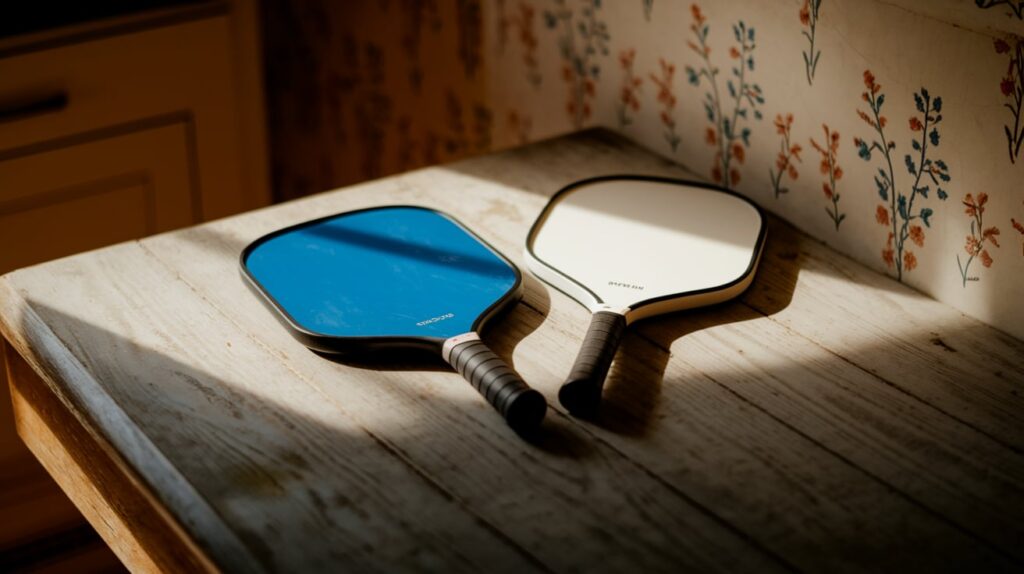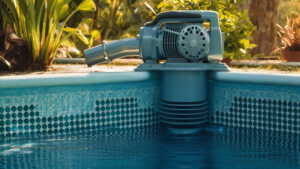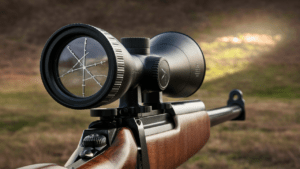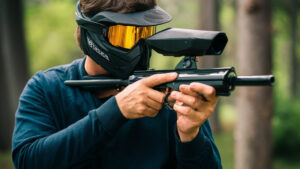How long does a pickleball paddle last? It’s a question that every pickleball enthusiast finds themselves asking at some point.
Imagine being in the middle of a thrilling match, and suddenly, your paddle feels different, maybe even off. Could it be time for a replacement, or is it just your imagination? Understanding the lifespan of your paddle not only helps in maximizing your performance but also in saving money by making informed purchasing decisions.
We’ll dive into the factors that affect your paddle’s durability, from materials to playing frequency. You’ll discover the signs that indicate it’s time for a new paddle and learn some tips to extend its life. By the end, you’ll have a clear picture of what to expect from your paddle and how to get the most out of it. Don’t miss out on ensuring your game is always at its best!
Factors Affecting Paddle Longevity
Understanding how long a pickleball paddle lasts is crucial if you’re serious about the game. Several factors can influence the longevity of your paddle. Whether you’re a weekend warrior or a seasoned player, knowing these can save you time and money.
Material Quality
The quality of materials used in your paddle is a major factor in its lifespan. Paddles made from high-grade materials like carbon fiber and graphite often last longer. They resist wear and tear better, providing sustained performance.
On the other hand, paddles made from cheaper materials might wear out quicker. Investing in quality materials can be costly upfront, but it often pays off in the long run.
Frequency Of Use
How often you play pickleball also impacts paddle longevity. If you’re hitting the courts daily, expect your paddle to wear out faster. This isn’t necessarily a bad thing; it means you’re playing more!
For casual players who play once a week, paddles tend to last longer. The less frequent use helps preserve the paddle’s integrity over time.
Playing Conditions
Where you play affects how long your paddle will last. Outdoor courts expose paddles to elements like sun, wind, and rain. These can degrade materials and shorten lifespan.
Indoor playing conditions are generally kinder to paddles. They avoid harsh weather, extending the paddle’s usability.
Maintenance Practices
How you care for your paddle matters. Simple practices can keep your paddle in top shape. Wipe it down after each session to remove dirt and sweat.
Avoid leaving it in extreme temperatures, like a hot car or a freezing garage. Proper storage can add months to its life. Do you have a paddle care routine?
In my experience, regular maintenance keeps my paddle performing well. It’s not just about longevity; it’s about consistency in your game.
By understanding these factors, you can make informed decisions about your pickleball gear. What insights will you apply to make your paddle last longer?
Signs Of Paddle Wear And Tear
Pickleball paddles are essential for any game, but they don’t last forever. Regular play can lead to various signs of wear and tear. Understanding these signs helps maintain peak performance. Let’s explore the common indicators of paddle damage.
Surface Damage
Surface damage is a clear sign your paddle is aging. Chips or cracks on the surface affect play. They can change how the ball reacts. Regularly inspect your paddle for any visible damage. Catching these early can prevent further issues.
Edge Guard Deterioration
The edge guard protects the paddle from impacts. Over time, it may loosen or crack. A damaged edge guard can lead to more serious paddle damage. Check the edge guard regularly. Ensure it is secure and intact.
Grip Wear
The grip is crucial for control. Over time, it may become slippery or worn. A worn grip can affect your hold and game precision. Replacing the grip when it shows wear is vital. Maintain a firm, comfortable grip for optimal play.
Tips For Extending Paddle Life
Pickleball paddles are essential to your game, and their longevity can significantly affect your performance. While wear and tear are inevitable, there are several ways you can extend the life of your paddle. From proper storage to regular cleaning, simple habits can make a big difference. Let’s dive into practical tips that will help you keep your paddle in top shape for longer.
Proper Storage
Storing your paddle correctly can add to its lifespan. Avoid leaving it in damp or wet places, as moisture can warp the materials. Instead, keep it in a dry, cool spot, like a dedicated sports bag or a closet. You might wonder why storage matters so much. Well, it’s because the environment your paddle rests in can affect its structural integrity over time.
Regular Cleaning
Cleaning your paddle regularly keeps it in good condition. Dust and dirt can accumulate, especially after playing outdoors. A soft cloth and mild soap can do wonders for maintaining its surface. Why not make cleaning a post-game ritual? It’s quick and ensures that your paddle is ready for the next match.
Avoiding Extreme Temperatures
Extreme temperatures can be harsh on your paddle. Heat can cause the materials to expand, while cold can make them brittle. Avoid leaving your paddle in direct sunlight or in the trunk of your car. Have you ever considered how temperature changes might affect your paddle’s performance? Keeping it at room temperature can help maintain its optimal condition.
By following these practical tips, you’ll be able to enjoy your pickleball paddle longer and save money in the process. Remember, every small step you take in caring for your paddle contributes to your overall game experience. Whether you’re a beginner or a seasoned player, why not start giving your paddle the care it deserves?

Expert Recommendations
Pickleball paddles are essential for every player. Proper care extends their lifespan. But, how long should you expect your paddle to last? Expert recommendations help clarify this. Knowing when to replace your paddle is key. It ensures optimal performance and enjoyment. Choosing a durable paddle also makes a big difference. Here’s what experts suggest.
When To Replace Your Paddle
Paddles wear out over time. Performance may decline gradually. Watch for visible damage. Cracks or dents indicate it’s time for a new paddle. Loss of grip can also signal replacement. A paddle’s responsiveness decreases with use. Listen for unusual sounds. A dull thud means the core is compromised. Regular players may need a new paddle every year. Casual players might extend this time. Pay attention to how your paddle feels during play. Comfort and effectiveness matter most.
Choosing A Durable Paddle
Material choice impacts paddle durability. Graphite paddles are lightweight and strong. Composite paddles offer durability and control. Consider the core material too. Polymer cores provide a balanced feel. Aluminum cores are robust and long-lasting. Check the paddle’s weight. Heavier paddles often last longer. Balance durability with comfort. A well-maintained paddle lasts longer. Store it in a protective cover. Avoid leaving it in extreme temperatures. Clean it regularly for best results. Choose wisely. Enjoy the game.
Comparing Paddle Lifespans By Brand
Pickleball paddles have varying lifespans. The brand plays a key role. Some brands offer durable paddles. Others may wear out faster. Understanding these differences helps players choose wisely.
Not all pickleball paddles are created equal. Paddle lifespan can differ significantly. Some brands prioritize durability. They use high-quality materials. These paddles last longer. Brands like Selkirk and Onix are known for this.
Selkirk: Quality And Longevity
Selkirk paddles are known for their durability. They use premium materials. Their paddles often last several years. Regular players favor Selkirk for reliable performance. The lifespan can extend with proper care.
Onix: Balancing Performance And Durability
Onix paddles offer a balance. They focus on both performance and lifespan. Many players find them dependable. Onix uses innovative technology. This extends the paddle’s life. Proper maintenance can enhance durability.
Gamma: Budget-friendly And Reliable
Gamma paddles are budget-friendly. They provide decent longevity. They might not last as long as premium brands. Yet, they offer reliable performance. Gamma is a good choice for casual players.
Paddle Lifespan Factors
Several factors influence paddle lifespan. Player usage impacts wear and tear. Frequent use may shorten the lifespan. Storage conditions matter too. Proper care can prolong a paddle’s life.
Pickleball paddle lifespan varies by brand. Consider your playing style. Choose a paddle that suits your needs. This ensures a satisfying game experience.
Frequently Asked Questions
How Often Should You Replace A Pickleball Paddle?
A pickleball paddle should be replaced every 1 to 5 years. This depends on the frequency of play and the paddle’s material. Regular players might need a new paddle sooner due to wear and tear. Advanced materials may extend the paddle’s life.
What Factors Affect A Pickleball Paddle’s Lifespan?
Several factors affect a paddle’s lifespan, including usage, material, and maintenance. Frequent play can wear out the paddle faster. High-quality materials tend to last longer. Proper storage and cleaning can extend the paddle’s life significantly.
How Can You Tell If A Paddle Needs Replacing?
Signs that a paddle needs replacing include visible damage and decreased performance. If the grip feels loose, it’s time for a change. Also, if the paddle’s surface is worn, it may affect your game. Regularly inspect your paddle to ensure it’s in good condition.
Do Expensive Paddles Last Longer Than Cheap Ones?
Generally, expensive paddles last longer due to better materials and craftsmanship. They are designed for durability and performance. However, proper care is crucial for both expensive and cheap paddles. Even high-end paddles can wear out quickly without proper maintenance.
Conclusion
Pickleball paddles can last a long time with proper care. Their lifespan depends on use, materials, and maintenance. Most paddles last between one to five years. Regular play and hitting can wear them out faster. Check your paddle often for signs of damage.
Replace it if you notice cracks or a change in performance. Always store your paddle in a dry, cool place. This helps extend its life. Choosing the right paddle can also make a difference. Invest wisely for better performance and durability.
Enjoy the game and keep your gear in good shape.








